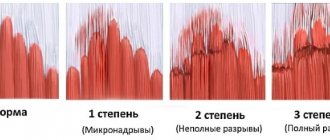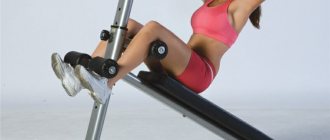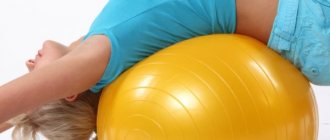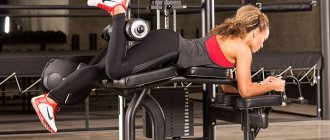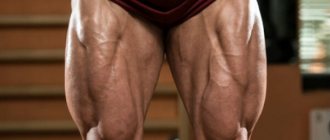Despite the fact that in sports the transverse abdominal muscle is almost never singled out as an object for pumping, it has an incredible impact not only on physical fitness, but also on human health. The stabilization of the spine and the correct location and functioning of the internal organs depend on it. Moreover, exercises for the transverse abdominal muscle are not always present in the training program, which leads to insufficient load and weakening. Understanding the anatomical features, structure and exercises necessary for pumping will strengthen the tone, as well as eliminate many problems and health risks.
Anatomy and function of the transverse abdominis muscle
Anatomically, the transverse abdominal muscle belongs to the deep muscles (3rd layer). Located directly under the inner braid (2nd layer). Presented in the form of a thin plate with transversely directed beams.
The transverse abdominal muscles are covered with their own fascia. They originate from:
- The inner surface of the 7-12 ribs (due to the introduction of teeth into the muscular part of the diaphragm).
- Inner lip of the iliac crest.
- Inguinal ligament (lateral third).
- Lumbothoracic fascia.
Attached to the linea alba.
The main function of the transverse abdominis muscle is to pull the ribs towards the midline, thereby maintaining the natural position of the internal organs.
“Vacuum in the stomach” - the correct technique
This technique allows you to work the transverse abdominal muscle, which holds all the internal organs. In fact, it is precisely because of the relaxation of this muscle that the stomach looks imperfect. The fact is that during any sport, be it fitness or performing strength exercises, the main load falls on the external and oblique abdominal muscles.
There are several variations of this exercise, which are performed from different positions.
The “vacuum in the stomach” exercise must be performed both while lying down and standing or bending forward. Considering that this is primarily a strengthening exercise, it should be performed as often as possible, or at least 5 times a week.
You should get used to the fact that the transverse abdominal muscles should be constantly tense - in just a few weeks they will become toned and you will no longer have to make efforts to control it
Why train the transverse abdominis muscle?
From a health perspective, not a sporting one, it is one of the most important structural elements of the abdominal muscles. However, everyone needs to train the transverse abdominal muscle, regardless of their occupation. In addition to holding the organs, the ability to maintain a straight body position directly depends on its tone. Also, training the transverse abdominal muscle is one of the best types of hernia prevention, especially for people who lead a sedentary lifestyle or have a sedentary job.
If we highlight the main reasons for which we should pump up the transverse abdominal muscle, we should note:
- Visual reduction of the abdomen and improvement of tone.
- Prevention of hernias.
- Maintaining organs in their natural position.
- Improving abdominal function.
- The ability to maintain a straight body position for a long time without fatigue and “bending” forward.
For women, exercises for the transverse abdominal muscle are one of the fastest and most effective ways to make your waist thinner.
Features of the transverse muscle
Location of the transverse abdominal muscle
To make their muscles toned, smooth and elastic, many women make various sacrifices: diets, exhausting exercise, weight loss belts. Transverse abdominis muscle training can be done at home, but before you start, it is important to study the structure of muscle tissue and the features of its work.
The transverse muscle is located on the side of the abdominal cavity, it does not stand out under the skin, so it is more difficult to pump it up than the longitudinal external abdominal muscles. However, the muscle plays an important role in the structure of the abdominal cavity. It holds the internal organs, creates abdominal tone, and prevents the occurrence of hernias. If the muscle is elastic and trained, it can significantly reduce abdominal volume after successful training. For such a result, it must be tightened.
Workout Features
The main problem is that standard abdominal exercises that are popular in fitness do not engage the transverse muscle. This is precisely the reason that even with trained external muscles, the overall aesthetics of the torso is far from ideal (the stomach protrudes, the waist visually becomes larger).
The second problem is the correct preparation of the training program. There are two main ways to work out the target zone:
- After basic abdominal exercises.
- On a separate day.
It is much more effective to allocate a separate day for pumping. This will ensure that it is loaded so that the external parts of the press do not take on most of the load. If you have no time at all, you can train it after the main abdominal block. In this case, the outer muscles will already be tired, which will provide the necessary tension for the inner layer.
To work effectively, it is enough to allocate no more than 2 short sessions per week, but only between meals (so that the stomach is empty).
Transverse abdominis muscle: where it is located, why and how to train
- What does all of this mean?
- How it works?
- What will happen if, for example, we put a weightlifting belt on a person?
- After childbirth or when the transverse abdominal muscle is weak for some reason
- How to train?
- Several exercises to improve integrated stabilization of the core muscles
Let's look at the transversus muscle. How is it located in our body? How is it attached? Please note that its fibers are directed horizontally. Attachment from the white line of the abdomen, along the ilium, intertwined into the lumbar fascia.
Most often in the literature it is described as a stabilizer muscle. It has a direct attachment to the vertebral bodies through the fascia, which increases its ability to create three-plane movement. The top and bottom portions can function independently, especially when creating a rotation.
What does all of this mean?
Let's remember the basic principle that guides us when working with certain muscles: their main function is to provide us with safe movement . Monitor changes in the distance of their attachment points. The primary function of muscles, from a functional point of view, is eccentric control of movement and only then concentric contraction , which we are all accustomed to in training. We look at the muscle and analyze which directions of movement will affect the change in its length.
Sagittal plane, during movements flexion and extension of the body. Fiber elongation occurs to a small extent. The muscle will react to this to the same small extent.
Frontal plane – lateral tilts of the body to the right and left. Here we will see more variation in the spacing of the mounting points and more stabilization work. The muscle is activated more actively.
Calculate your ideal sports weight!
Horizontal plane – rotation to the right and left. Given the way the fibers of the muscle are arranged, it is rotation that will have the greatest impact on the work of the transverse abdominis muscle in terms of movement in three planes.
Intermediate conclusion: for the transverse muscle to function normally, movements in the human body must occur between the pelvis and the body in all three planes.
Now let's look at the work of the muscle as a controller of intra-abdominal pressure and the most important stabilizer of the abdominal cavity. Here very serious demands are placed on the transverse muscle! It should provide stability to an area of our body where, apart from the spinal column, there are no rigid structures. And this stability is ensured due to the formation of a certain “hydraulic” cushion.
The best exercises for the transverse muscle
An important condition for effectively pumping the transverse abdominal muscle is muscle concentration. Without it, even the most effective movements will not bring any benefit, since the load will be taken by the muscles of the outer layer. Therefore, during the period of mastering the technique, it is recommended to simultaneously improve muscle control.
Exercise "Vacuum"
It is generally accepted that a “vacuum” gives “wonderful abs” and it was this that became the key to Arnold Schwarzenegger’s ideal waist. Modern sports research proves that vacuum is almost useless for the outer layer. However, it is best suited for deep abdominal areas. It is considered the most effective exercise for the transverse abdominal muscle for men.
Technique:
- Stand up straight. Hands down, feet shoulder-width apart. The back is straight.
- Take a powerful breath and push your abdominals forward (using your muscles).
- After 1-2 seconds of tension, exhale powerfully, pulling your stomach towards your ribs as much as possible.
- Hold the position for 3-5 seconds, then inhale and repeat the movement.
It is optimal to perform 7-10 breaths per workout. It is not the number of repetitions that is important, but the force of exhalation and the muscle tension that you can hold. It is also strictly not recommended to increase the time you hold your breath. This can have a detrimental effect on blood vessels and even lead to loss of consciousness. The main method of progression is muscle tension and the number of inhalations/exhalations in a series (no more than 15 per workout).
Plank exercise
Despite the fact that the plank is often criticized for its low effectiveness for the abs (oblique and straight), for the inner layers this is one of the most useful exercises.
Technique:
- Take a lying position, as for push-ups. Press your toes and your entire forearm into the floor (located parallel to each other). There is a right angle at the elbow, the body forms a single straight line from the neck to the heels.
- Maintain your current position for as long as possible.
Beginners are advised to hold the position for up to 30-40 seconds. Advanced athletes – from 60 to 90 seconds. A plank for more than one and a half minutes is considered ineffective, since in order to stabilize the position, the load will “go” to other groups.
Pelvic bridge
A great move, but only if done with the right style. The classic power bridge version is not suitable for this task. The movement should be performed without weight, with a delay at the peak point of up to 4-5 seconds.
Technique:
- Lie on the floor, place your arms along your body. Bend your legs at the knees.
- Lift your pelvis off the floor and lift it so that your body forms a straight line from your knees to your shoulders.
- Hold this position for 3-5 seconds, while concentrating tension (while exhaling).
It is important to make the bridge so that the shoulder blades lie on the floor. The option of resting on a bench is not suitable in this case.
Exercise "vacuum" while inhaling
Technique:
1. Stand straight, feet shoulder-width apart, hands on hips. This is your starting position.
2.Now inhale the maximum amount of air, drawing in your stomach as much as possible, and hold in this position. Imagine that your stomach is touching your spine.
We recommend reading: Exercises for the gluteus medius muscle at home
3. One isometric contraction lasts 20-40 seconds. While doing this, try to breathe in a normal manner.
4.Then exhale and return to the starting position.

